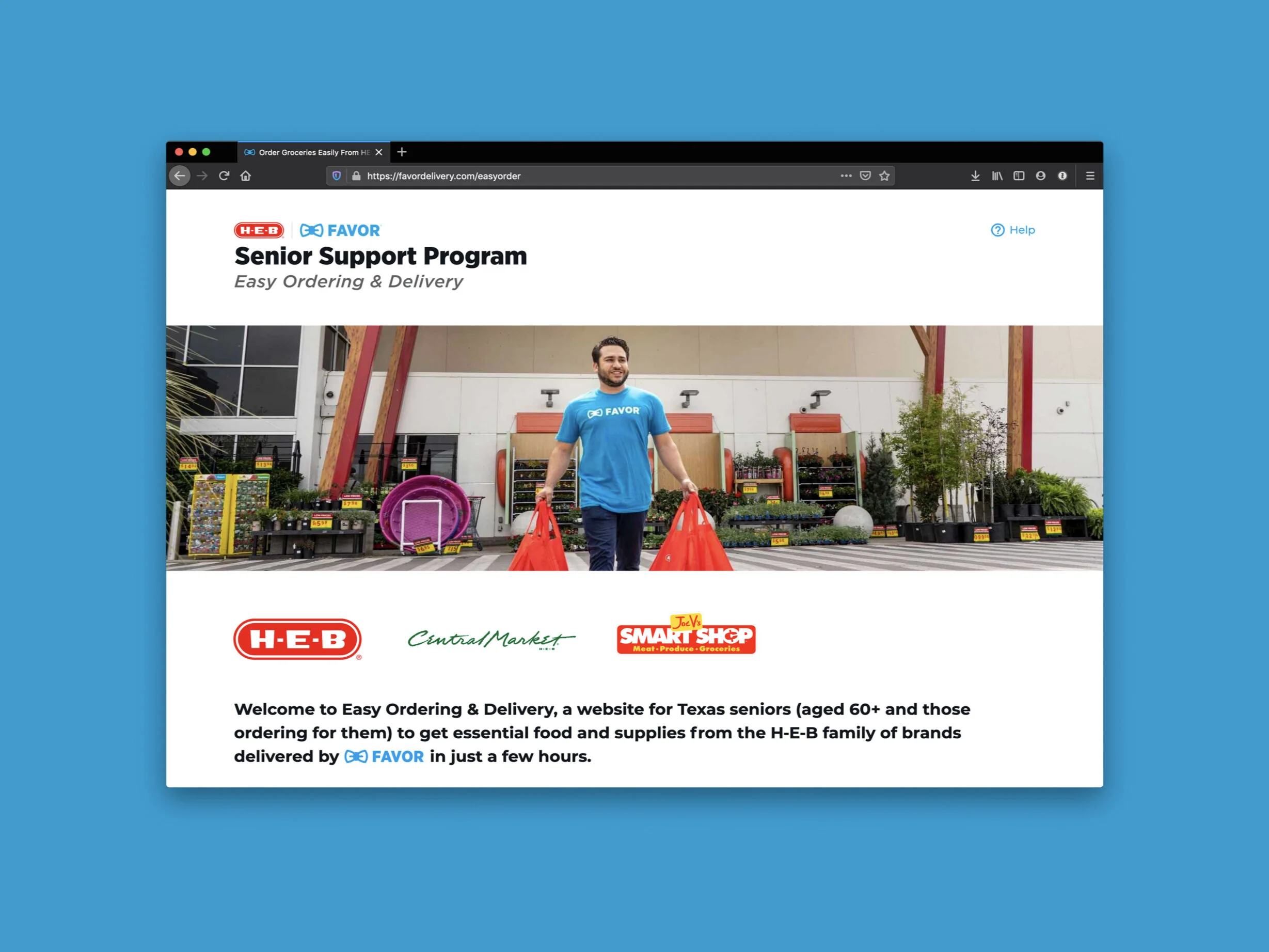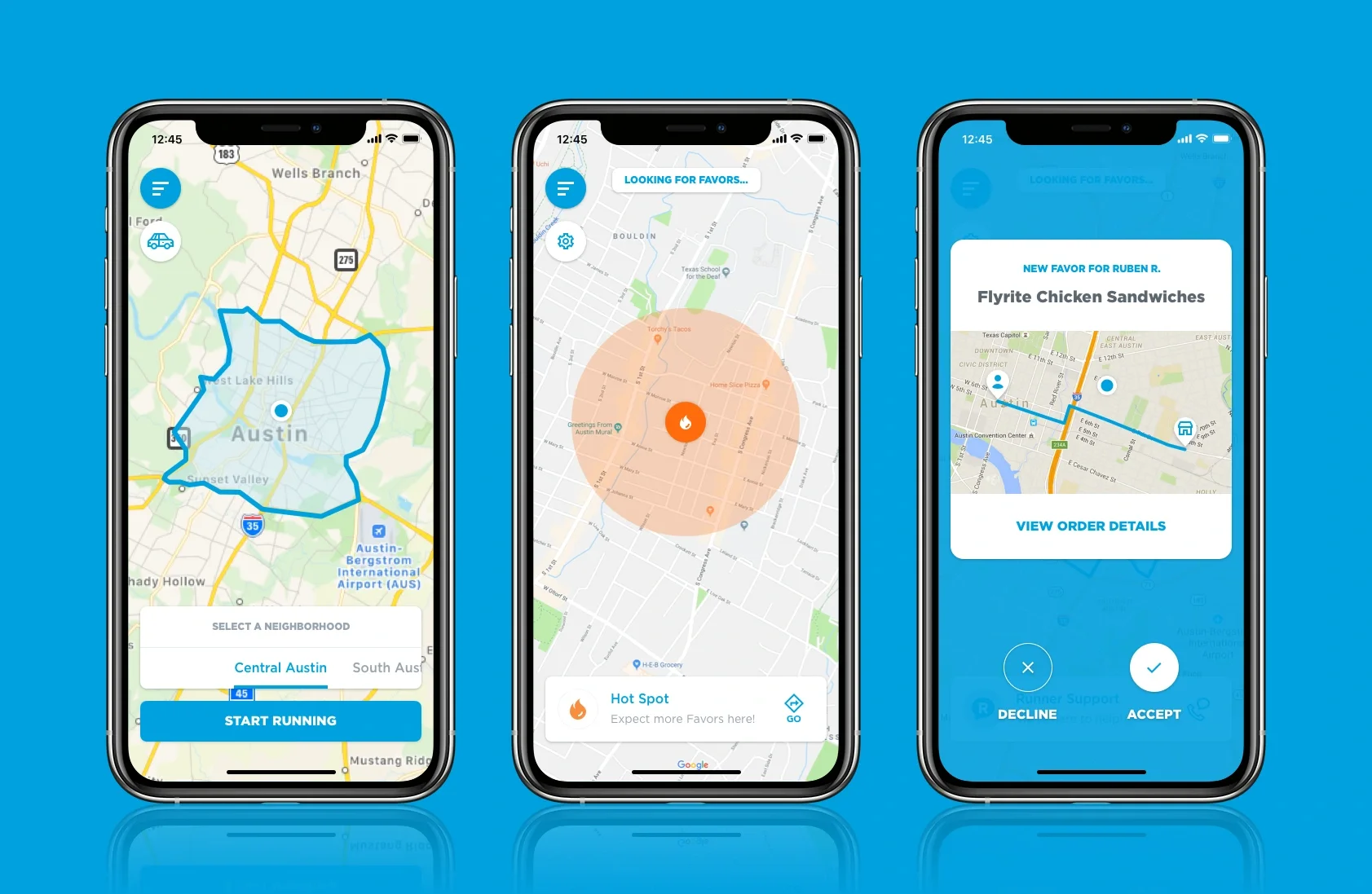Designing the Experience of Texas’ Favorite On-Demand Delivery Company
I joined Favor in 2017 as the second product designer and one of four original Product team members. What started as a product design role evolved into leading all of Product Design and UX Research as the company experienced explosive growth.
Over nearly four years, I had a hand in every Product team hire and major release. I built Favor's UX Research function from scratch, co-led the creation of our first product vision, and helped scale the Product team from 4 to 18 people.
The company grew 3x and was acquired by H-E-B in 2018. That same year, Favor debuted on the Inc. 5000 list as the #1 fastest-growing company in Austin, #5 in Texas, and #138 nationally.
The Work
As Head of Product Design & Research, I managed 5 designers and 2 researchers, hiring, leveling, and growing the team. My team designed experiences for multiple audiences:
Consumers: Placing orders through the platform
Runners: Delivery drivers connecting orders to customers
Merchant Partners: Restaurants and businesses using Favor
Internal Teams: Tools powering operations
I worked closely with engineers and product managers to envision, test, and implement new features across all our products.
What I Built
Research from the ground up: Created Favor's entire Product Research function, establishing practices that informed every major product decision.
Company vision: Co-led efforts to craft Favor's first product vision, aligning the organization around a shared future.
Core products: Touched or created most of Favor's products/core features, from consumer features to internal tools.
A diverse team: Grew the Product team from 4 to 18 PMs, designers, and researchers.
Roles
Head of Product Design & Research: June 2019 - May 2021
Sr. Product Designer & Team Lead: Jan - June 2019
Product Designer: Aug 2017 - Jan 2019
Selected Projects
Serving vulnerable Texans during COVID-19 Outset
Partnered with H-E-B to rapidly design and launch a bespoke grocery ordering platform for Texas seniors at the pandemic's outset. Led the design team that created Easy Ordering & Delivery, a streamlined, list-based experience matching how seniors naturally shop, enabling vulnerable Texans to stay home safely while powering ~122,000 grocery deliveries by year's end 2020.
Redesigning consumer ratings to unlock actionable insights
Led evaluation of Favor's ratings data and discovered users had inconsistent interpretations of the rating scale—some even used one star to mean "outstanding." Designed a new experience with standardized star explanations and quick attribute selection that increased completion rates and transformed vague feedback into actionable product insights.
Designing a unified platform for support teams
Led design and research to replace four disconnected support tools with a unified platform built from the ground up. Started with extensive contextual inquiry, observing agents at their desks to understand workflows, then designed a custom tool that consolidated chat, actions, and account management in one place. Boosted agent productivity by ~40%.
Solving inefficient Runner positioning at scale
As Favor's coverage areas expanded, our inability to guide Runners to high-demand locations created inefficiencies that cost millions in guaranteed payments. Designed a neighborhood system that replaced Favor's single-zone model with smaller, overlapping areas as markets expanded. Collaborated closely with top Runners to create interfaces that gave them freedom to choose where they worked while surfacing demand data to guide better decisions. Reduced idle time from ~18 minutes to under 10 minutes per hour and cut top-up costs from over $1 per delivery to $0.13—saving millions.




